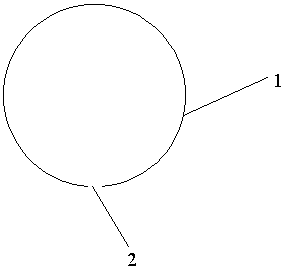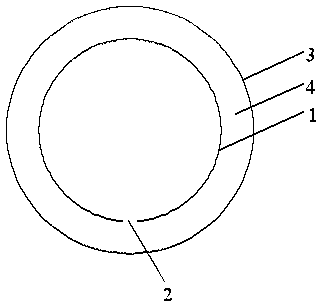A construction method for building refractory bricks of a rotary kiln by using brick supporters
A construction method and refractory brick technology, which is applied in the field of refractory brick masonry of rotary kiln, can solve the problems of large deviation between masonry size and design, long construction period, and large investment in bricklaying machines, so as to reduce the number of later maintenance and the number of construction workers The effect of reducing investment and maintaining economic benefits
- Summary
- Abstract
- Description
- Claims
- Application Information
AI Technical Summary
Problems solved by technology
Method used
Image
Examples
Embodiment Construction
[0040] The content of the present invention will be further described in detail below in conjunction with the accompanying drawings and specific embodiments. The spring steel plate referred to in the 3# kiln masonry is the bridge steel plate (YB168-70) produced by Anshan Iron and Steel Co., Ltd., and other steel plates and iron plates are made of 304. Stainless steel heat-resistant steel plate.
[0041] Our company has four 200-meter rotary kilns producing petroleum proppant. At the end of June 2015, the refractory bricks of 1#, 2# and 3# kilns were all dismantled and rebuilt as a whole.
[0042] The 1# kiln and the 2# kiln are built by traditional kiln support method and bricklaying machine method respectively according to the existing technology.
[0043] The 3# kiln is built with brick supporters, such as figure 1 As shown, the brick supporter is a circular ring 1 bent from a spring steel plate. There is an opening 2 in the circular ring 1, and the two ends of the opening ...
PUM
 Login to View More
Login to View More Abstract
Description
Claims
Application Information
 Login to View More
Login to View More - Generate Ideas
- Intellectual Property
- Life Sciences
- Materials
- Tech Scout
- Unparalleled Data Quality
- Higher Quality Content
- 60% Fewer Hallucinations
Browse by: Latest US Patents, China's latest patents, Technical Efficacy Thesaurus, Application Domain, Technology Topic, Popular Technical Reports.
© 2025 PatSnap. All rights reserved.Legal|Privacy policy|Modern Slavery Act Transparency Statement|Sitemap|About US| Contact US: help@patsnap.com


